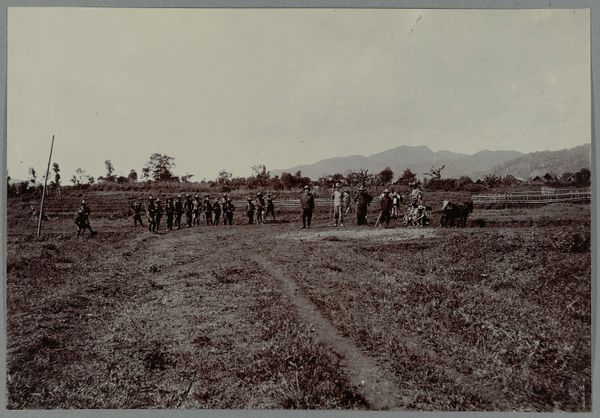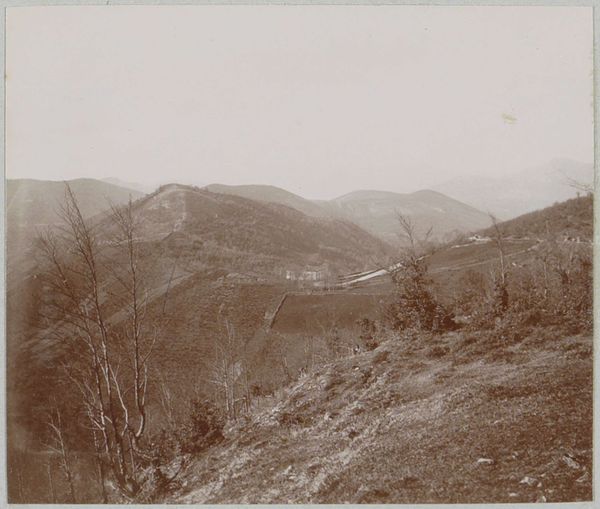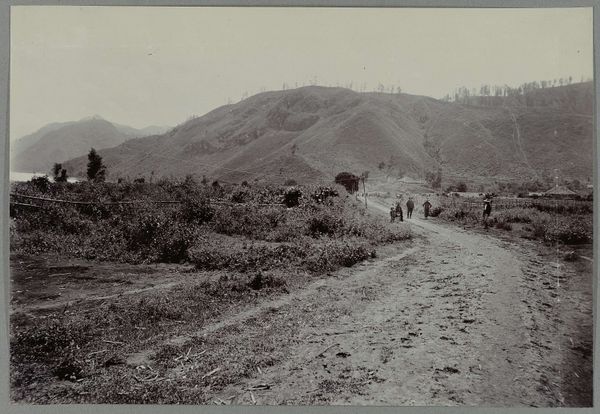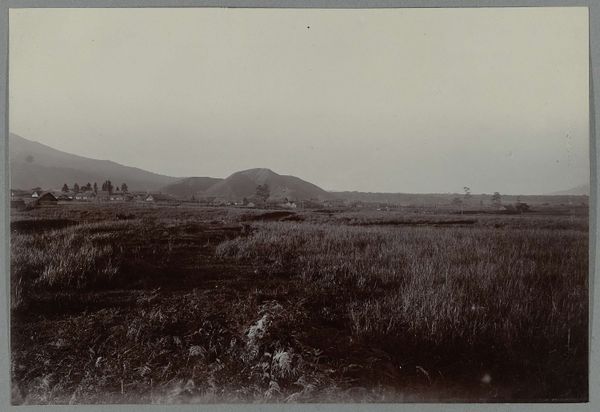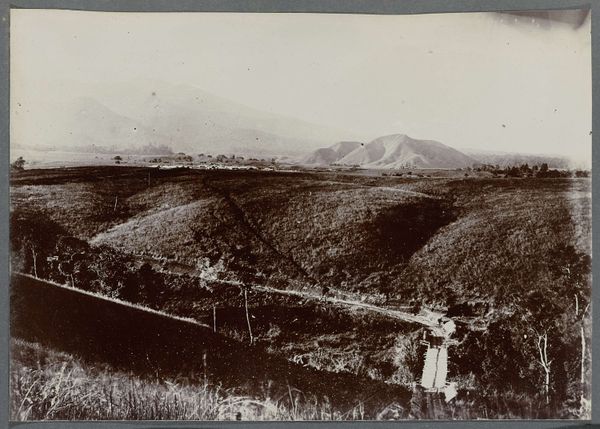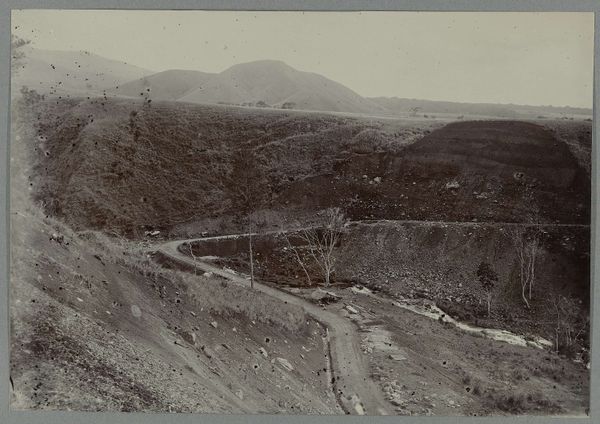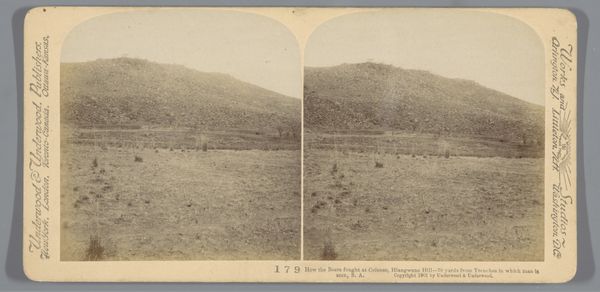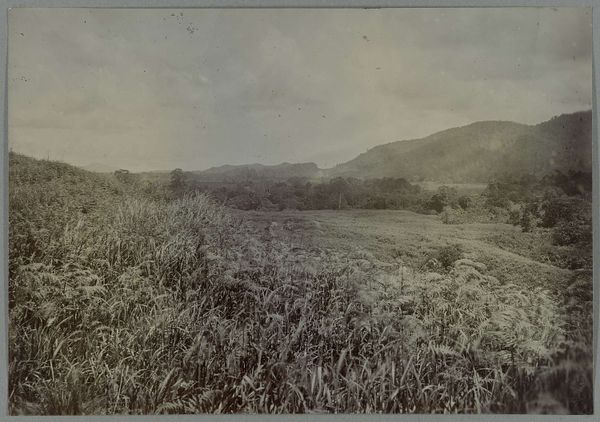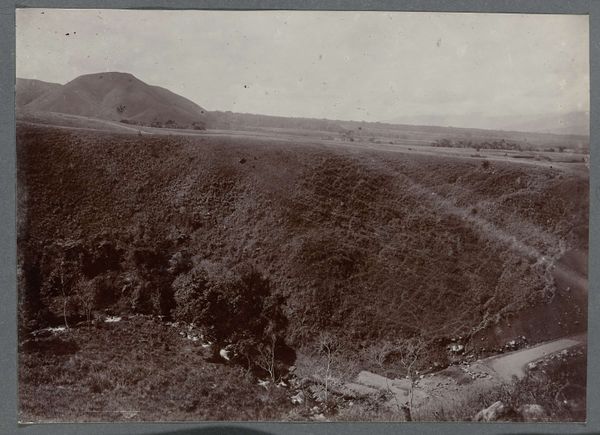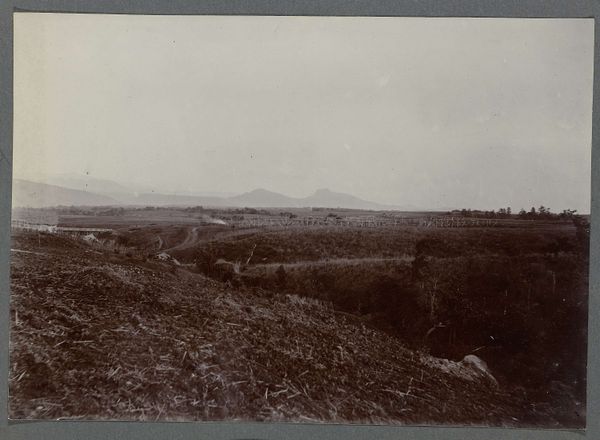
print, photography
#
pictorialism
# print
#
landscape
#
photography
#
naturalism
Dimensions: height 138 mm, width 200 mm
Copyright: Rijks Museum: Open Domain
Curator: First impressions? I see quietude. Editor: You're right; a hushed, expectant atmosphere. There's something deeply still about this landscape; almost melancholy in its monochrome. I wonder what it felt like to be standing right there, in that quiet heat, gazing at that view. Curator: Well, let's try to uncover some of the narrative, shall we? This photograph, titled "Nederlanders bij Bebesan aan het meer," or "Dutchmen at Lake Bebesan", is estimated to have been taken around 1912. Editor: Right. You get that immediate sense of colonialism, the 'Dutchmen' just stuck out there as an unnatural aspect to that otherwise organic scene. How staged, like it’s documenting their “triumph” over that wild space. Curator: Precisely. We observe a confluence of naturalist and pictorialist styles here. Naturalism is obvious with the un-posed capturing of the land, and the attention to accurate documentation of the world around. The softer focus and subdued tones of pictorialism give it an aesthetic sheen. Editor: Absolutely, it elevates a potentially mundane documentary photograph into something more dreamlike. The tonal range seems very precise despite what appears to be quite ordinary scenery. Curator: It speaks to the photographic technologies available at the time. Think of the sociopolitical undercurrents in Dutch colonial Indonesia back then. The subjects in this photograph would not be there but for specific power dynamics. This artwork prompts reflections on their presence, and by implication, absence of local voices from the frame. Editor: I'm so glad you brought that up. It underscores the photographer’s agenda—whether overt or subconscious— to document, classify, and essentially claim possession through visual representation. Those men, dwarfed by the landscape yet centered in the composition, it sends a strong symbolic message. Curator: It truly captures a moment laden with the weight of its era. Seeing the figures seemingly planted in place really hits home when you look into how those political figures really just saw this area as another plot in the vast project. Editor: Makes me think of what’s absent as much as what is present… Powerful in that respect.
Comments
No comments
Be the first to comment and join the conversation on the ultimate creative platform.
